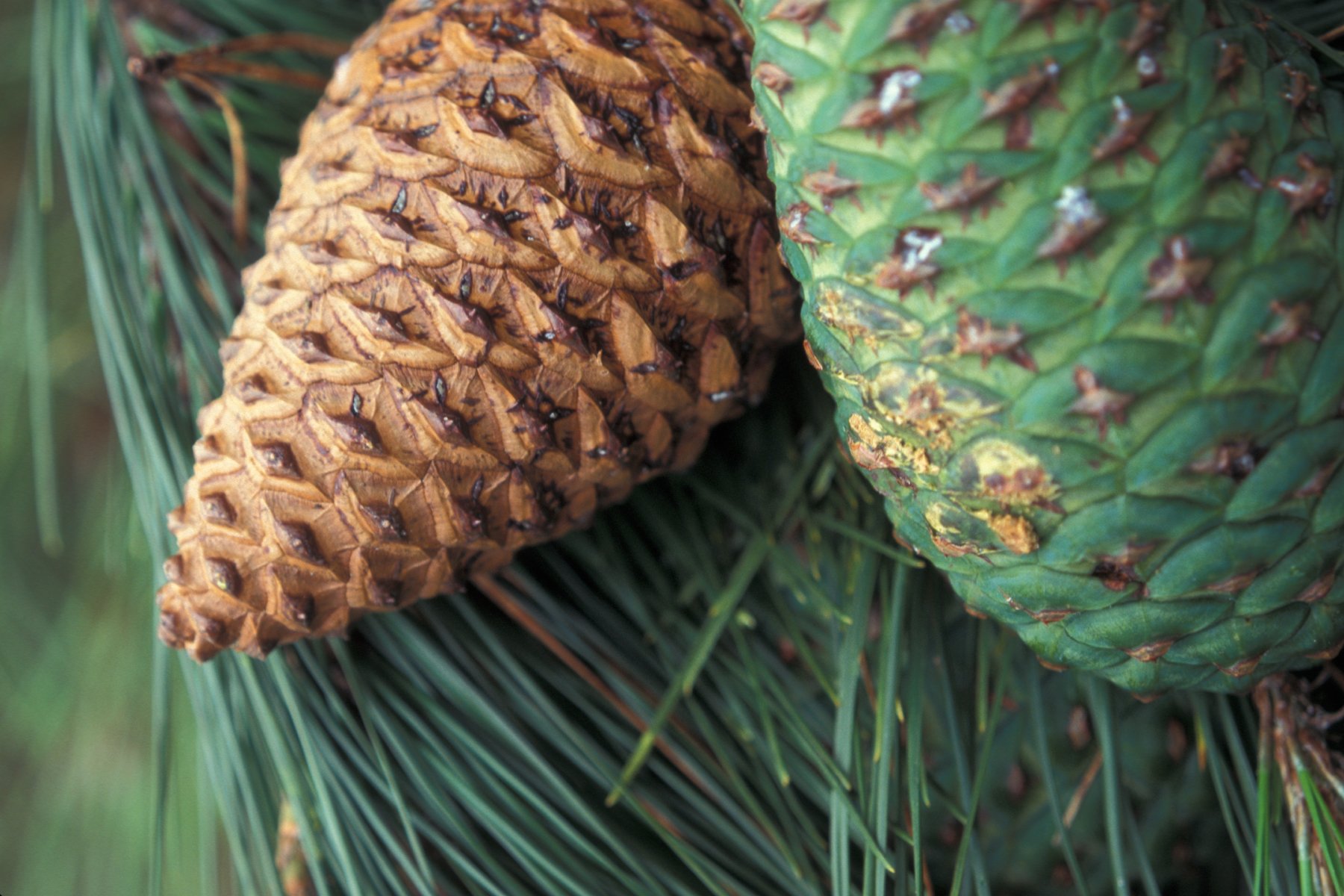The first few months of this year has seen Dartmoor Tree Surgeons working with an unusually high number of Monterey Pines. These distinctive trees have become a real feature of the Devon landscape, and often become very popular within their communities. Read on to learn more about the history of these “mountain kings”, as well as the best way to keep an eye on any you might be responsible for.
Monterey Pines (Latin: Pinus radiata) are indigenous to the Californian region of Monterey, which itself gets its name from the Spanish words “mountain” and “king”. Like many coniferous trees they are relatively fast growing, reaching maturity within 30-40 years and commonly achieving heights of up to 40 metres (More & White, 2003, p. 253). Once they are mature they have a characteristic domed shape with a profusion of deep green needles and often interesting, twisted limb formations. The trees have high numbers of fist-sized, sticky pinecones which are responsive to heat; in their native home, pine cones which had dropped to the forest floor would be opened by the heat of a forest fire, and the seeds would then be spread in the fire’s aftermath.
Like many American trees now at home within the UK, Monterey Pines first came to these shores with the famous botanist and explorer David Douglas, who amongst other introductions also brought us the Douglas Fir, which was named in his honour. The Monterey Pine is particularly comfortable in the warm, coastal regions of the South West, growing even larger and faster than it does in its homeland, and several stands of these trees can be seen near or on our cliffs, particularly on the north coast. In some countries, such as New Zealand, the Monterey Pine has become a very useful timber crop tree, although here in the UK you are much more likely to find a Monterey Pine gracing estate lands or forests. It was a particularly popular choice during the Victorian era for parks and estates, and now that many of these pieces of land have become more built upon it is not uncommon to have a Monterey Pine within a stone’s throw of residential homes, if not actually in a garden!
This Monterey Pine in Sidmouth unfortunately fell victim to Cauliflower Fungus and was removed for safety reasons.
Several notable specimens can be found throughout Devon in particular, with the town of Sidmouth having a number of mature trees which have together become something of a local icon. Knowle Gardens is host to a large and twining specimen which is listed on the Monumental Trees database, and other fine examples of this species can be found on Pennsylvania Hill in Exeter. Finally, The University of Exeter also has a large Monterey Pine in its arboretum, and, if you are ever near Reed Hall on the Streatham campus, you can find the stump of second Monterey Pine which was planted when the Hall was first built and is now used to mark different points of the University’s history.
Whilst they make an eye-catching and interesting addition to our landscape, Monterey Pines are unfortunately very short lived, especially when compared to our native deciduous species. Like many fast-growing softwoods they do not last for a particularly long time, with most experts agreeing the 80 years is the average lifespan and that 100 years is the upper limit for a healthy tree. Trees of this age can be expected to go into decline (although there are outliers as with every species – the Monterey Pine in Knowle is believed to be upwards of 170 years old, a real feat!), and, being as large as they are, this can pose serious problems when they are found in domestic gardens. Many of the Monterey Pines in Devon were planted at a similar time and are now coming to the end of their natural lives, which does help to explain why such a high number of these trees are coming to our attention this year. The Monterey Pines we have worked on are all of a similar age, and have been affected by a number of issues ranging from cauliflower fungus to Phytophthora pluvialis, which they have dealt with as well as having to combat the normal issues brought on by old age.
If you happen to have a large, mature Monterey Pine in your own garden don’t panic but do keep a weather eye on it, looking out for any changes in it’s foliage, such as discolouration, for fungi at the base of the tree, and especially for unexpected branch loss which is not directly caused by extreme weather and for dead wood in the crown of the tree itself. Your local tree officer should be able to advise you on your tree if you have any concerns, as will any reputable arboricultural consultant.
These stately trees have become a wonderful and striking feature of the Devon landscape, and are at their best when given the space they need to mature and decline in peaceful safety.
Further reading:
RHS Overview of Monterey Pines
An article from the National Trust regarding an aged specimen in one of their Sussex parks
Dartington Hall’s article documenting the failure of a particularly old Monterey Pine
The Trees and Design Group has created an excellent planting guide and reference document for trees which can be found in Europe, the Monterey Pine is detailed on page 235 (this is a large PDF, so best opened on a computer!)





